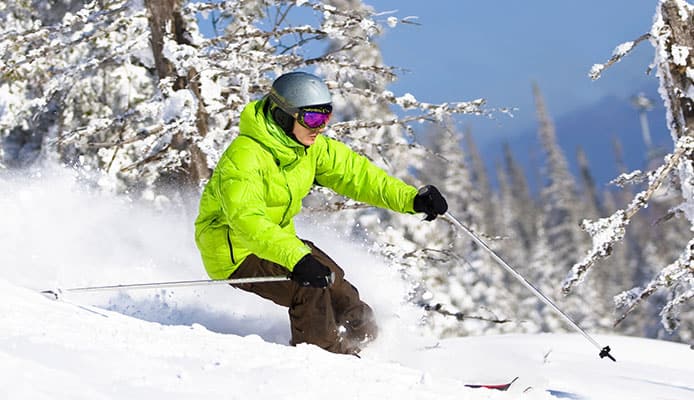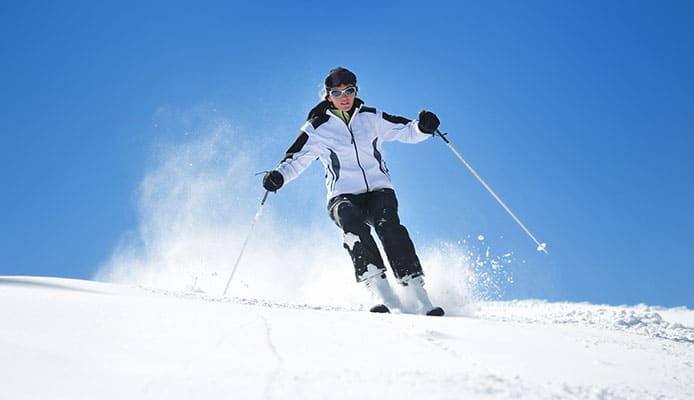
Learning how to ski rails is one of the most important techniques beginners should learn. It might seem straightforward in theory, but in practice, it is a lot more complicated than you thought. Hitting the rails requires you to start small and practice consistently to achieve perfection.
While you might already be familiar with how to turn on skis and how to pole plant while skiing, among other techniques, skiing on rail is an entirely different story. Even for someone who has been skiing for years, this can be intimidating.
If you want to learn how to do rails on skis, read the rest of this guide. We’ll let you know the basics to help you master it like a seasoned skier!
1. Balance
As you prepare for a ski holiday, take the time and exert effort to train for skiing. Among others, one thing that you need to work on is your balance. Skiing on a rail is like skiing on balance beams. Some beams are round while some are flat. Regardless of their shape, it is crucial to balance your body to have the right approach.
Good balance is critical not only because it allows you to remain in an upright position, but also because it makes it possible to move on the rail. Without a good balance, you will fall from the rail. It needs muscular involvement, so make sure to work the different parts of the body.
2. Foot Positioning
Regardless if you want to learn how to ski steeps, how to ski moguls, or how to ski rails, you must pay attention to the way you position your feet. This is important to keep your balance and to efficiently move from one point to another.
Proper positioning on the rail requires your back foot to stay flat. On the other hand, it is the front foot that will be dominant, which will take full control of the rest of your body as you move on the rail.
Some people think that while they are on the rail, they can easily correct the position of the feet when it seems like they are about to fall. One of the tricks we would like to teach you about how to do rails on skis is to prevent this from happening. Instead, let go. This is a good way to prevent ski injuries.
3. Approach
Now that you are aware of the proper positioning, it is time to learn how to do the approach. This is going to be intimidating for many beginners. Focus on the approach and let go of your fears. The more distracted you are, the higher is the possibility that you won’t make it on the rail.
If you are just learning how to ski rails, you do not necessarily have to jump on your approach. Instead, a better and safer way of doing this is to step slowly on the rail and maintain your balance. There is no rush in learning how to land perfectly.
If you are wearing a ski jacket, keep the zipper aligned with the rail during the approach. This puts your body at the center of the rail, which helps in maintaining proper balance as you glide. This also prevents you from changing your trajectory while you are already midway.
When the trajectory is not right during the approach, there is a tendency that your feet will be too far. This will make you fall off.
Before getting on the rail, it is also important that you already spot the end of it. This makes it easier to know when you should jump.
During the approach, you will also need to pop and spin your body at 90 degrees. This puts you in a proper position.
You might also like: List Of All Types Of Skiing
4. Body Position

After you approach, you are already at the top of the rail. As we talked about earlier, balance is crucial at this point. While your ski boots may be rigid, they are not enough to hold your position. Instead, you need to arch your feet as you bend on the rail. An easier way to do this is to imagine that you are barefoot, and you are trying to cling to the rail.
See to it that your shoulders are parallel to the rail. Keep it shoulder-width apart. If they are too far from each other, you will end up falling from the rail.
5. Composure
Once you have already achieved the balance of your body and you are at the top of the rail, do not get too excited. You might end up losing focus, and it won’t take long before you will fall. Keep your composure. Take the time to absorb your current state and think of your next move, making sure that you will land safely.
On the rail, it is also important that you stay low and relaxed. You should keep your movements at a minimum. If you are moving a lot, there is a higher tendency that you will end up falling.
6. Get Off the Rail
When you are ready to get off the rail, prepare to jump out of it. Do not do the jump too early or too late. You need to calculate every move to avoid hurting yourself. If you are too early taking off, you might hit yourself on the rail. When it is too late, you might lose momentum.
To properly get off the rail, put your ski poles into great use. Plant it on the ground so that you will be able to gain your balance once you land.
Globo Surf Overview
Ready to take your skiing to the next level? One thing that you need to learn is how to ski rails. As noted above, this is not as easy as it sounds. Seeing the rail can already intimidate many, especially beginners. It can result in injury, so make sure to follow the right technique, including balance and positioning of your body.
More Snow Ski Lesson Guides:
- Ski Tricks For Beginners
- How To Jump On Skis
- What Are Skis Made Of: Ski Construction Guide
- How To Ski While It’s Raining
- 3 Ways How To Carry Skis
- How To Get On And Off Ski Lifts
- How Long Is A Ski Season?
- How Much Does It Cost To Ski
- How To Slow Down Skiing
- How To Stop On Skis

